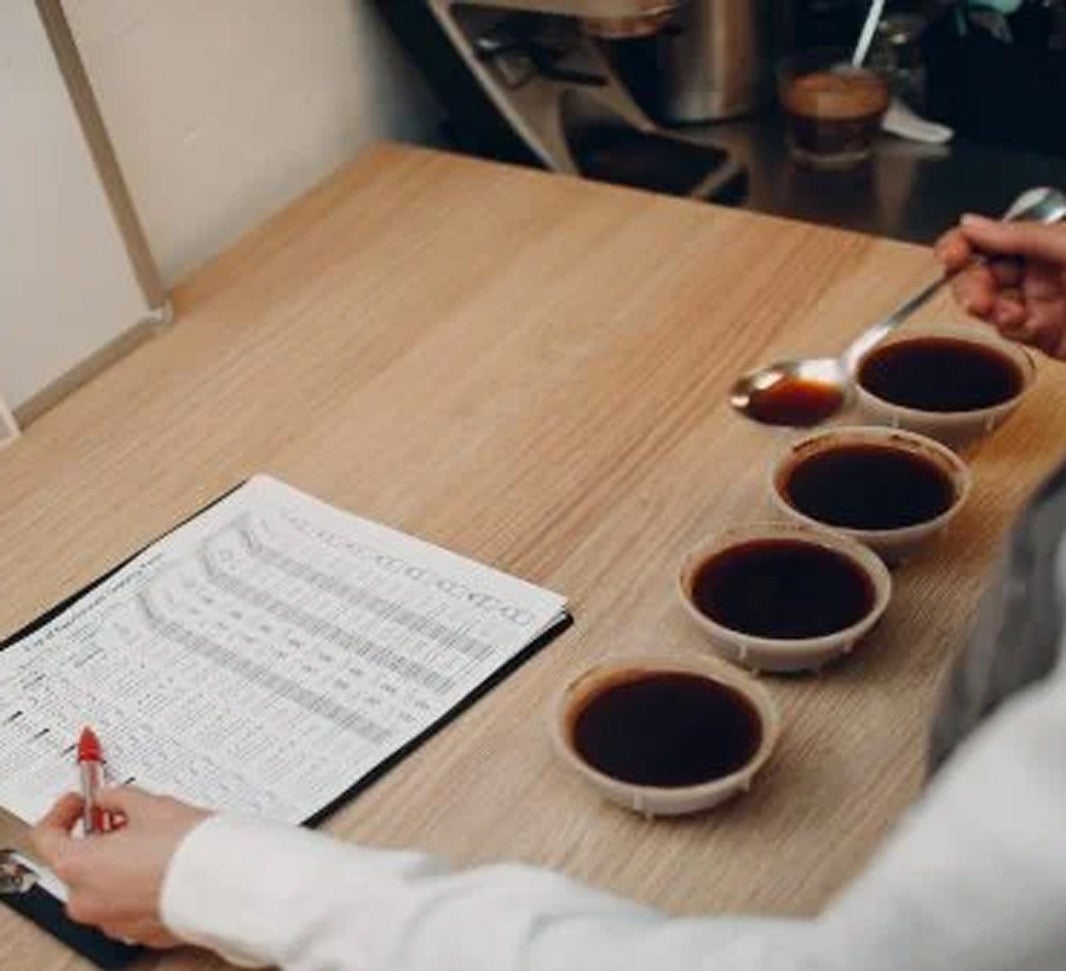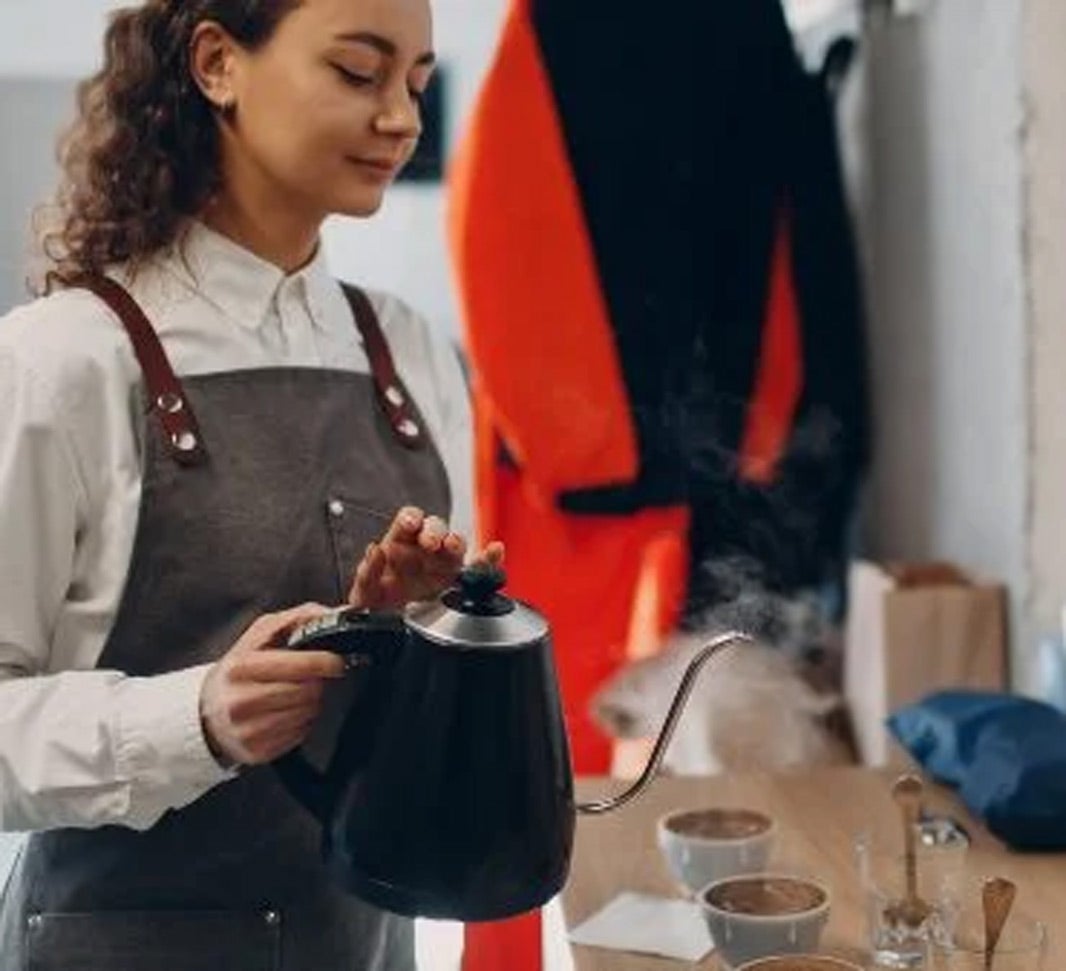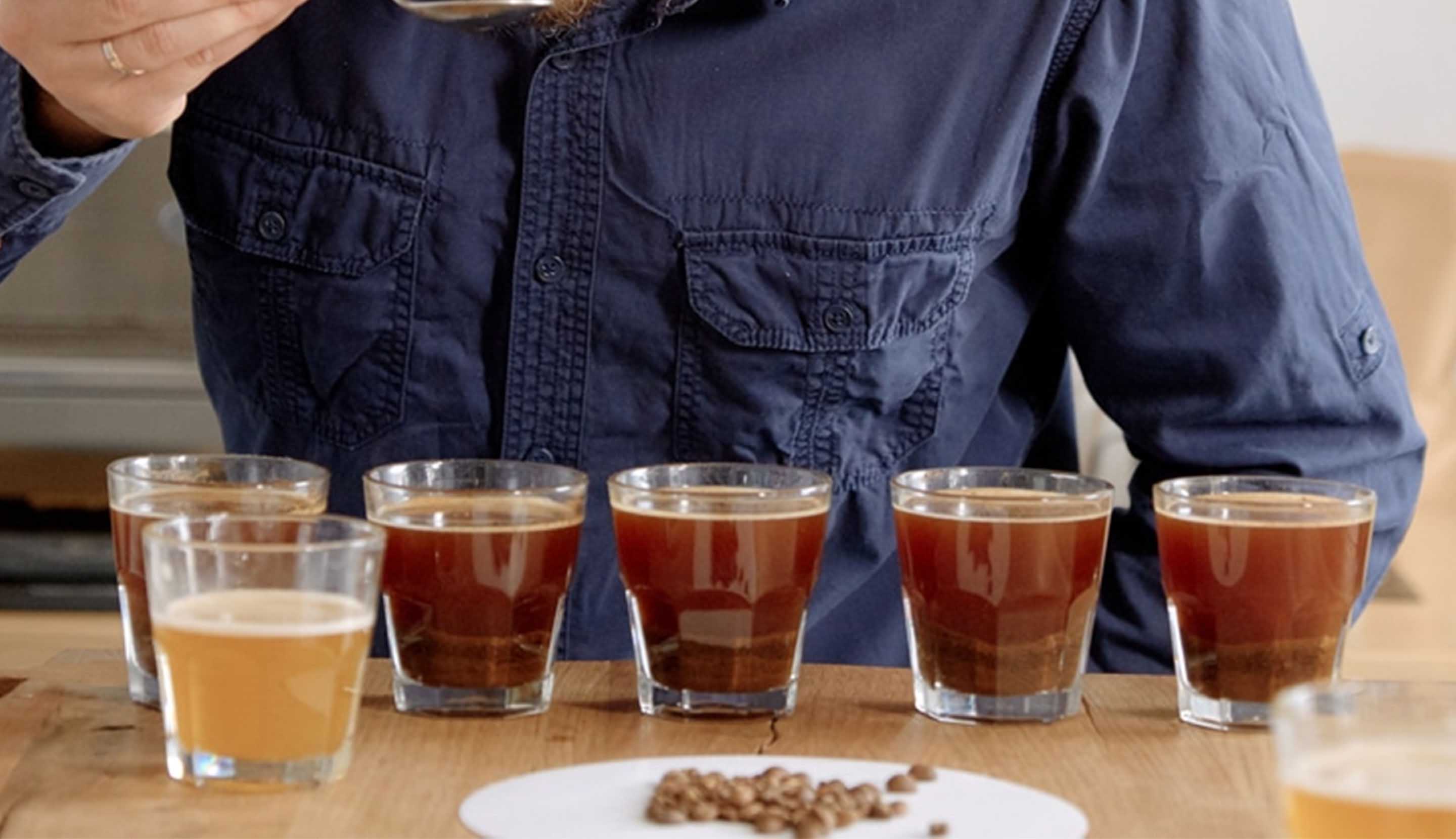What is coffee cupping?
Coffee cupping, also known as ‘cup tasting’ is a tasting technique that’s used by professionals throughout the coffee industry. Green coffee buyers use it to decide which coffee to purchase, roasters do so to evaluate roast profiles, quality controllers do it to make sure all coffee for purchase is excellent and baristas will even coffee cup to expand their palate and to get more familiar with origins. There are even competitions out there, specifically for coffee cupping!
During the coffee cupping process, coffee will be evaluated and scored against various aspects such as cleanness, sweetness, acidity, mouthfeel and aftertaste. Often, different types will be contrasted against each other.

Beginners guide to coffee cupping
Whether you’re looking to learn more about the different coffee types or have got a coffee tasting day coming up and you want to look like a pro, you’ll probably be wondering how you do coffee cupping. Here’s a quick guide to the basics:
1. First, hot water will be poured onto freshly roasted (generally at least two days old for best flavour) and ground beans in a coffee bowl. The coffee is then left to steep for between 3 – 5 minutes.
2. After the coffee has steeped, it’s time to break the crust. This is done by using a spoon to push the grounds to the back of the bowl. Make sure you rinse the spoon after each crust is broken to prevent cross contaminating other cups!
3. Next, you’ll want to remove the remaining coffee grounds and foam from the cup.
4. At this stage the coffee is left to cool so it won’t burn your mouth upon drinking and to best let the flavours emerge from the brew.
5. Once it’s cooled, it’s time to get your spoons ready! Two large spoons similar to soup spoons are used, one for the cup and the other for your mouth. Again, it’s important to rinse after each cup is sampled to prevent cross contamination.
6. Now it’s time to talk about the coffee cupping tasting technique. It takes some getting used to! You’ll want to suck powerfully/inhale to draw the coffee to the roof of your mouth – slurping is encouraged! –, let it tickle your tongue then fall to the back of your mouth. Doing this creates a vapour which stimulates your taste and smell. Roll the coffee around in your mouth to look for the various tastes and flavours.
7. Spit it out! If you’re going to be sampling many in a day it’s important to spit it out. This keeps your taste buds fresh for the coffees later on.
More coffee cupping tips
If you truly want to look like a coffee tasting professional, here’s some further coffee cupping tips:
- Take the time to assess the aroma of the coffee both dry and wet. This gives your taste buds a preview of what’s to come.
- Take notes when you’re sampling the coffee. Write about the smell, acidity, body, flavour, depth and aftertaste. Professionals will often be given an evaluation form at tasting sessions where they’ll score the coffee on these features.
- If you’re carrying out your own coffee cupping session, make sure you use the same methods each time as changing things could alter the results. Think of it like a scientific experiment!

That’s our guide to coffee cupping! Even if you’re not a professional in the industry it’s a great way to increase your knowledge and explore how different beans, roasts, grinds, origins and brew types taste.
Want to find out more about coffee tasting? Read our guide on how to make the perfect coffee, next.


